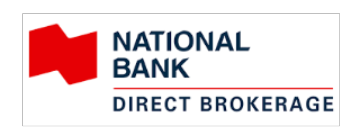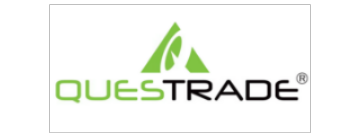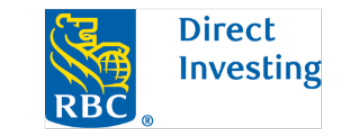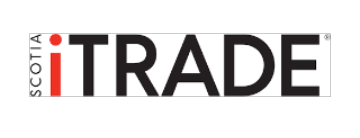HXQ
Investment Objective
HXQ seeks to replicate, to the extent possible, the performance of the NASDAQ-100® Index (Total Return), net of expenses. The NASDAQ-100® Index (Total Return) includes 100 of the largest domestic and international nonfinancial companies listed on The NASDAQ Stock Market.
Fund Details
As at March 28, 2024
The NAV chart above only shows the historical daily net asset value per unit (NAV) of the ETF, and identifies the various distributions made by the ETF, if any. The distributions are not treated as reinvested, and it does not take into account sales, redemption, distribution or optional charges or income taxes payable by any security holder. The NAV values do contemplate management fees and other fund expenses. The chart is not a performance chart and is not indicative of future NAV values which will vary.
The Growth of 10K chart above is based on the historical daily net asset value per unit (NAV) of the ETF, and represents the value of an initial investment into the ETF of $10,000 since its inception, on a total return basis. Distributions, if any, are treated as reinvested, and it does not take into account sales, redemption, distribution or optional charges or income taxes payable by any security holder. The NAV values do contemplate management fees and other fund expenses where paid by the fund. The chart is not a performance chart and is not indicative of future value which will vary.
Annualized Performance (%) *
| 1mo | 3mo | 6mo | YTD | 1 yr | 3 yr | 5 yr | 10 yr | SIR** | |
|---|---|---|---|---|---|---|---|---|---|
| Horizons NASDAQ-100® Index ETF | 1.01 | 11.01 | 23.94 | 11.01 | 39.42 | 15.03 | 20.70 | -- | 20.71 | Nasdaq 100 (Total Return) | 0.92 | 11.44 | 24.52 | 11.44 | 39.79 | 15.44 | 21.20 | -- | 21.32 |
**Fund performance since inception on April 19, 2016, as at March 31, 2024
Calendar Year Performance (%) *
| 2016 | 2017 | 2018 | 2019 | 2020 | 2021 | 2022 | 2023 | |
|---|---|---|---|---|---|---|---|---|
|
Horizons NASDAQ-100® Index ETF |
-- | 23.68 | 7.95 | 31.78 | 45.35 | 26.19 | -27.86 | 51.18 | Nasdaq 100 (Total Return) | -- | 23.87 | 8.80 | 32.85 | 46.47 | 26.32 | -27.67 | 51.43 |
Horizons HXQ is listed in both Cdn$ and US$. The performance of the US$ units of Horizons HXQ directly corresponds to the performance, in U.S. dollar terms, of the NASDAQ-100® Index (Total Return), net of expenses. The performance of the Cdn$ units of Horizons HXQ will generally, but not directly, correspond to the performance, in Canadian dollar terms, of the NASDAQ-100® Index (Total Return), net of expenses. The difference in the performance of the Cdn$ units of Horizons HXQ compared to the performance, in Canadian dollar terms, of the NASDAQ-100® Index (Total Return), net of expenses, is solely a result of the differences in daily FX rates used by the ETF and the Index provider to determine the NAV and Index level respectively, in Canadian Dollar terms. These differences are not an accurate representation of the index tracking for Horizons HXQ in meeting its investment objective. Please refer to the HXQ.U Annualized Performance for an accurate representation of the index tracking for Horizons HXQ.
The Inception Date shown is the inception date of the predecessor ETF of the same name which was structured as a trust. On November 27, 2019, after receiving unitholder approval, the predecessor ETF merged into a class of shares of a corporate fund structure. In accordance with exemptive relief, the data of the ETF presented here includes the historical data of the predecessor ETF in order to provide full disclosure of the ETF’s data.
Distributions
Distribution data is not currently available.
Sector Allocation
As at September 29, 2023| Information Technology | 48.58% |
| Communication Services | 16.01% |
| Consumer Goods | 14.13% |
| Health Care | 7.12% |
| Consumer Service | 6.60% |
| Industrial Services | 4.94% |
| Utilities | 1.24% |
| Financials | 0.56% |
| Energy | 0.55% |
| Real Estate | 0.27% |
Top 10 Index Holdings
As at April 24, 2024| Security Name | Weight |
|---|---|
| Microsoft Corp | 8.85% |
| Apple Inc | 7.60% |
| NVIDIA Corp | 5.80% |
| Amazon.com Inc | 5.34% |
| Meta Platforms Inc Cl A | 5.03% |
| Broadcom Inc | 4.37% |
| Alphabet Inc Cl A | 2.73% |
| Alphabet Inc Cl C | 2.66% |
| Costco Wholesale Corp | 2.41% |
| Tesla Inc | 2.27% |
Holdings are subject to change. Download full prior business day: Holdings
Investment Objective
HXQ seeks to replicate, to the extent possible, the performance of the NASDAQ-100® Index (Total Return), net of expenses. The NASDAQ-100® Index (Total Return) includes 100 of the largest domestic and international nonfinancial companies listed on The NASDAQ Stock Market.
Fund Details
As at March 28, 2024
The NAV chart above only shows the historical daily net asset value per unit (NAV) of the ETF, and identifies the various distributions made by the ETF, if any. The distributions are not treated as reinvested, and it does not take into account sales, redemption, distribution or optional charges or income taxes payable by any security holder. The NAV values do contemplate management fees and other fund expenses. The chart is not a performance chart and is not indicative of future NAV values which will vary.
The Growth of 10K chart above is based on the historical daily net asset value per unit (NAV) of the ETF, and represents the value of an initial investment into the ETF of $10,000 since its inception, on a total return basis. Distributions, if any, are treated as reinvested, and it does not take into account sales, redemption, distribution or optional charges or income taxes payable by any security holder. The NAV values do contemplate management fees and other fund expenses where paid by the fund. The chart is not a performance chart and is not indicative of future value which will vary.
Annualized Performance (%) *
| 1mo | 3mo | 6mo | YTD | 1 yr | 3 yr | 5 yr | 10 yr | SIR** | |
|---|---|---|---|---|---|---|---|---|---|
| Horizons NASDAQ-100® Index ETF | 1.01 | 11.01 | 23.94 | 11.01 | 39.42 | 15.03 | 20.70 | -- | 20.71 | Nasdaq 100 (Total Return) | 0.92 | 11.44 | 24.52 | 11.44 | 39.79 | 15.44 | 21.20 | -- | 21.32 |
**Fund performance since inception on April 19, 2016, as at March 31, 2024
Calendar Year Performance (%)
| 2016 | 2017 | 2018 | 2019 | 2020 | 2021 | 2022 | 2023 | |
|---|---|---|---|---|---|---|---|---|
| Horizons NASDAQ-100® Index ETF | -- | 23.68 | 7.95 | 31.78 | 45.35 | 26.19 | -27.86 | 51.18 | Nasdaq 100 (Total Return) | -- | 23.87 | 8.80 | 32.85 | 46.47 | 26.32 | -27.67 | 51.43 |
Horizons HXQ is listed in both Cdn$ and US$. The performance of the US$ units of Horizons HXQ directly corresponds to the performance, in U.S. dollar terms, of the NASDAQ-100® Index (Total Return), net of expenses. The performance of the Cdn$ units of Horizons HXQ will generally, but not directly, correspond to the performance, in Canadian dollar terms, of the NASDAQ-100® Index (Total Return), net of expenses. The difference in the performance of the Cdn$ units of Horizons HXQ compared to the performance, in Canadian dollar terms, of the NASDAQ-100® Index (Total Return), net of expenses, is solely a result of the differences in daily FX rates used by the ETF and the Index provider to determine the NAV and Index level respectively, in Canadian Dollar terms. These differences are not an accurate representation of the index tracking for Horizons HXQ in meeting its investment objective. Please refer to the HXQ.U Annualized Performance for an accurate representation of the index tracking for Horizons HXQ.
The Inception Date shown is the inception date of the predecessor ETF of the same name which was structured as a trust. On November 27, 2019, after receiving unitholder approval, the predecessor ETF merged into a class of shares of a corporate fund structure. In accordance with exemptive relief, the data of the ETF presented here includes the historical data of the predecessor ETF in order to provide full disclosure of the ETF’s data.
Distributions
Distribution data is not currently available.
Sector Allocation
As at September 29, 2023| Information Technology | 48.58% |
| Communication Services | 16.01% |
| Consumer Goods | 14.13% |
| Health Care | 7.12% |
| Consumer Service | 6.60% |
| Industrial Services | 4.94% |
| Utilities | 1.24% |
| Financials | 0.56% |
| Energy | 0.55% |
| Real Estate | 0.27% |
Top 10 Index Holdings
As at April 24, 2024| Security Name | Weight |
|---|---|
| Microsoft Corp | 8.85% |
| Apple Inc | 7.60% |
| NVIDIA Corp | 5.80% |
| Amazon.com Inc | 5.34% |
| Meta Platforms Inc Cl A | 5.03% |
| Broadcom Inc | 4.37% |
| Alphabet Inc Cl A | 2.73% |
| Alphabet Inc Cl C | 2.66% |
| Costco Wholesale Corp | 2.41% |
| Tesla Inc | 2.27% |
Holdings are subject to change. Download full prior business day: Holdings















